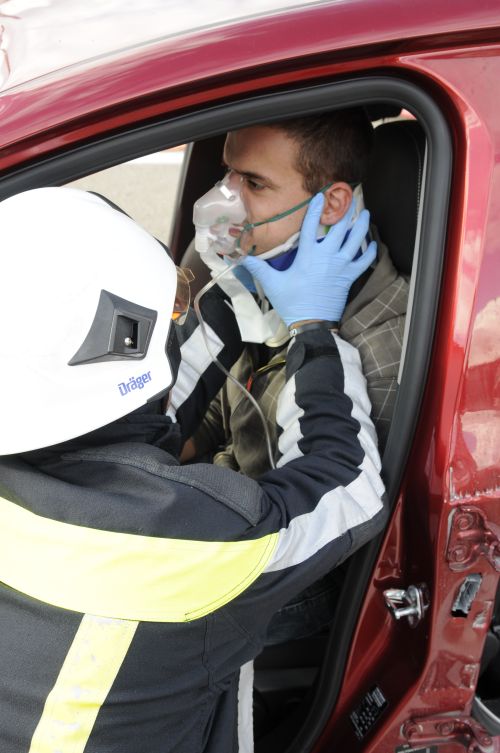Spinal Care
I have always been a firm believer that the way we extricate in the future will not so much be determined by new car design, but more by the advances of medical research. Of course, more specifically I mean research into prehospital trauma care.
I am privileged to know and work with some excellent prehospital doctors, some of whom are at the forefront of such research, and I can tell you that the pace of change is sometimes staggering.
If we look at technical rescue, in general not much has really changed in the last decade. OK, cars are now stronger (relatively) but in previous blogs I have demonstrated that this increase in strength can easily be overcome with the latest generation of tools.
So back to patient care: For the last 20 years I was always taught the following:
- Approach from the front, this will minimise movement in the casualty and allow them to initially protect their own cervical spine
- Get hands on the casualty and provide manual inline stabilisation
- Fit a cervical collar

Let’s look at these instructions more closely. Approaching from the front is, I have to say, good practice. However, the research I have done and conversations I have had with doctors firmly lead me to believe that anyone suffering major trauma to the spine, in particular the cervical spine, will not readily turn and face you. The body’s way of protecting an injury such as this is to send the muscles into spasm, preventing any movement, thus greatly reducing pain. Getting hands on quickly is a must. Ensure you do this correctly and consider the following:
- If you get in the back seat and provide inline stabilization from the rear you cannot see your patient’s face/chest. This does not allow a visual assessment of breathing and conscious level. So place yourself at the front where possible (always being aware of undeployed airbags)
- Ensure an effective grip. Reduce movement in all directions as much as possible. Do not cover the patient’s ears and reassure them.
- Ensure you are in a stable position. Always make sure you are sat/stood in a position that restricts your movement. Remember, if you move or fall, this will have a detrimental effect on the spinal care of your patient
- Never let go. If you have to reposition, ensure a second person takes over. Ensure they take control and audibly say “Hands on” or “I have the head” at this point you can take your hands away.
Finally let’s discuss fitting a cervical collar. Up until about 5 years ago I always taught rescuers to fit a collar at the earliest opportunity. However this can be difficult (in a confined space) and always takes a minimum of 2 people. The effectiveness of fitting a collar in this position always concerned me and it is difficult to manage clothing which ensures an effective application (if clothing is not removed, the collar can become loose and clothing is moved/removed later).
Research also suggested that fitting a cervical collar can increase Intracranial Pressure (ICP), essentially increasing the pressure of the blood travelling to and from the brain. This can have negative effects in certain patients.
It then became protocol to fit a collar just before the extrication phase (i.e. before the physical removal of the patient from the vehicle), so adding extra support. This reduced the time the collar was on the patient and so lessened the possible effects of raised ICP.
Of course it is important to remember that even with the application of a collar, ALL patients must still receive manual inline stabilization as well.
The latest research has currently been reviewed in the Faculty of Prehospital Care and The Royal College of Surgeons of Edinburgh and they have issued a consensus statement which makes interesting reading. Another study from 2009 can be found here.
Trauma care will affect the way we carry out extrication in the future and the pace of change is rapid. We MUST ensure a close link with prehospital professionals allowing us to assess the validity and effectiveness of our technical skills.
As ever, feedback is most welcome!
Ian
Remember – The information above is for your consideration only and should never replace your local operating procedures.